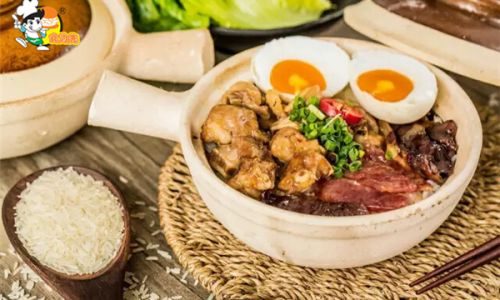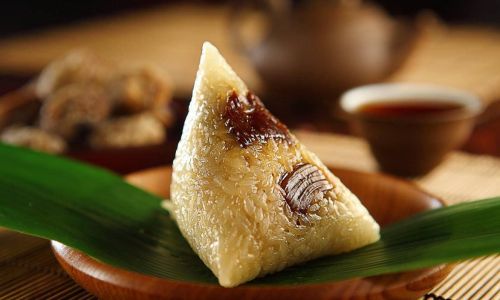Clay pot rice, a beloved dish in Cantonese cuisine, is celebrated for its crispy rice crust, tender meat, and aromatic vegetables. However, the true soul of this dish lies in its sauce—a rich, savory elixir that ties all elements together. Mastering the art of preparing this sauce is a culinary milestone, blending precision, patience, and an understanding of flavor dynamics. This guide delves into the history, ingredients, and techniques required to create a clay pot rice sauce that rivals those served in Michelin-starred restaurants.

The Cultural Significance of Clay Pot Rice Sauce
Clay pot rice, or 煲仔饭 (bāo zǎi fàn), originated in Guangdong province, China, and has been a staple of Cantonese households for centuries. Traditionally cooked in a small, heat-retaining clay pot, the dish symbolizes comfort and nostalgia. The sauce, often referred to as the “golden liquid,” is not merely a condiment but a bridge between generations, with recipes passed down through families. Its complexity reflects the philosophy of yin and yang—sweet, salty, umami, and aromatic notes harmonizing to create balance.
Key Ingredients: The Foundation of Flavor
Crafting the perfect sauce begins with selecting high-quality ingredients. Each component plays a distinct role:
-
Soy Sauce (Light and Dark):
- Light soy sauce provides saltiness and umami, while dark soy sauce adds depth, color, and a hint of sweetness. Opt for premium brands like Pearl River Bridge or Lee Kum Kee for authentic flavor.
-
Oyster Sauce:
A fermented sauce derived from oysters, this ingredient imparts a briny sweetness and velvety texture. Vegetarian alternatives, made with mushrooms, are available for plant-based diets.
-
Sesame Oil:
Toasted sesame oil lends a nutty aroma and richness. A few drops go a long way—overuse can overpower the sauce.
-
Shaoxing Wine:
This Chinese cooking wine, made from fermented rice, eliminates raw flavors and adds a subtle acidity. Substitute with dry sherry if unavailable.
-
Sugar:
White granulated sugar balances saltiness, while brown sugar or rock sugar introduces caramelized notes. Adjust quantities based on desired sweetness.
-
Aromatics:
- Garlic and ginger provide pungency, while scallions and cilantro add freshness. Toasting spices like star anise or cinnamon can elevate complexity.
-
Stock:
Homemade chicken or vegetable stock is ideal, but store-bought low-sodium broth works in a pinch. Avoid cubes or powders, which contain artificial additives.
-
Thickeners:
Cornstarch or potato starch ensures a glossy, coat-the-spoon consistency. For gluten-free versions, use arrowroot powder.

Step-by-Step Preparation: Alchemy in a Pot
Preparing the Aromatic Base
-
Toast Spices (Optional):
In a dry pan, lightly toast star anise, cinnamon, or Sichuan peppercorns until fragrant. This step releases essential oils, intensifying flavor. -
Sauté Aromatics:
Heat 2 tablespoons of peanut oil in a saucepan over medium-low heat. Add minced garlic (1 tablespoon) and ginger (1 teaspoon), stirring until golden. Avoid browning, as bitterness can emerge.
Building the Sauce
-
Deglaze with Shaoxing Wine:
Pour 1/4 cup of Shaoxing wine into the pan, scraping up any caramelized bits. Allow the alcohol to evaporate for 1–2 minutes. -
Incorporate Liquids:
Add 1/2 cup light soy sauce, 1/4 cup dark soy sauce, 1/4 cup oyster sauce, and 2 cups stock. Stir to combine. -
Sweeten and Season:
Dissolve 2 tablespoons sugar (adjust to taste) and 1/2 teaspoon white pepper. Simmer gently for 5 minutes to meld flavors.
Thickening and Finishing
-
Create a Slurry:
Whisk 1 tablespoon cornstarch with 2 tablespoons cold water until smooth. Gradually pour into the simmering sauce, stirring continuously to prevent lumps. -
Reduce and Adjust:
Cook for an additional 3–5 minutes until the sauce coats the back of a spoon. Taste and adjust seasoning with extra soy sauce, sugar, or a splash of rice vinegar for acidity. -
Infuse Aromatics:
Just before removing from heat, stir in 1 tablespoon toasted sesame oil and a handful of chopped scallions or cilantro.
Expert Tips for Perfection
-
Balance Is Key:
The sauce should harmonize salt, sweet, and umami without any single flavor dominating. Taste frequently and adjust incrementally. -
Control Heat:
A low, steady simmer prevents scorching and allows flavors to develop gradually. High heat risks bitterness and separation. -
Customize with Add-Ins:
Experiment with dried shiitake mushrooms (rehydrated and sliced) for earthiness, or chili oil for heat. For a smoky twist, add a pinch of smoked paprika. -
Layer Flavors:
Marinate proteins (chicken, pork belly, or Chinese sausage) in a portion of the sauce before cooking. This infuses meat with flavor and deepens the sauce’s complexity.
Regional Variations and Dietary Adaptations
-
Hainanese Influence:
Add a dollop of chili paste and a squeeze of lime for a tangy kick, inspired by Hainan’s tropical flavors. -
Vegetarian Delight:
Replace oyster sauce with mushroom-based alternatives and use kombu-infused stock for oceanic umami. -
Spicy Sichuan Twist:
Introduce doubanjiang (fermented broad bean paste) and Sichuan peppercorns for a numbing heat. -
Lighter Options:
Halve the soy sauce and sugar, then add grated daikon radish for a refreshing, less cloying sauce.
Common Pitfalls and How to Avoid Them
-
Over-Salting:
Start with less soy sauce and build up gradually. If the sauce becomes too salty, balance it with a touch of sugar or a splash of unsalted stock. -
Lumpy Texture:
Ensure the cornstarch slurry is fully dissolved in cold water before adding it to the simmering sauce. -
Burnt Aromatics:
Keep the heat low when sautéing garlic and ginger. Burnt bits will impart bitterness. -
Inconsistent Thickness:
Adjust the slurry ratio based on desired consistency. For a thinner sauce, use less starch; for a thicker glaze, increase slightly.
Storage and Shelf Life
-
Refrigeration:
Transfer cooled sauce to an airtight container. It will keep for up to 1 week in the refrigerator. -
Freezing:
Portion into ice cube trays for easy use. Frozen sauce retains quality for up to 3 months. -
Reheating:
Gently warm in a saucepan over low heat, adding a splash of water or stock if needed to loosen.
Serving Suggestions Beyond Clay Pot Rice
-
Dipping Sauce:
Pair with dumplings, spring rolls, or roasted meats. -
Stir-Fry Enhancer:
Add a spoonful to fried rice or noodle dishes for instant depth. -
Marinade Base:
Combine with honey and garlic for a glazing sauce for grilled chicken or tofu. -
Soup Thickener:
Whisk into broths or ramen for a silky finish.
Conclusion: The Journey to Mastery
Crafting the perfect clay pot rice sauce is an exercise in patience and intuition. Each batch offers a lesson in flavor balance, inviting cooks to refine their techniques over time. Whether served in a bustling Hong Kong da pai dong or a home kitchen, this sauce embodies the essence of Cantonese cuisine—simplicity elevated by meticulous attention to detail.
As you embark on your culinary journey, remember that perfection lies not in rigid adherence to recipes but in understanding the interplay of ingredients. Experiment, taste, and most importantly, savor the process. After all, the best sauces are those made with love, one simmering pot at a time.





0 comments